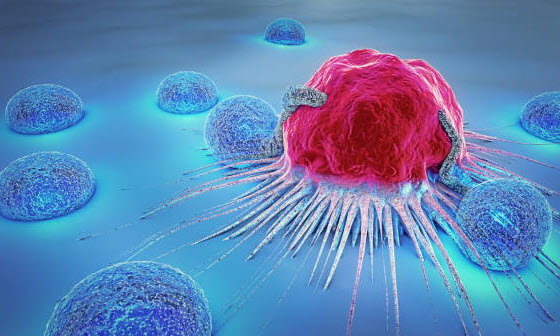How Cancer Can Metastasize Without a Primary Tumor

Oftentimes, when we think of cancer, we think of a primary tumor. In fact, this is what so much of our diagnostic screening sets out to find: an abnormal mass occupying space. But an important question to ask is; can cancer metastases occur without a primary tumor? Surprisingly, the answer is yes.
Cancer Diagnosis and Tumors
Tumors are aberrant growths of tissue and are either benign or malignant. We term them malignant when this mass is invasive, uncontrollable, dangerous, and potentially fatal. Invasive risk is the reason great importance is given to screening exams (i.e., mammograms, digital rectal exams, colonoscopies). The rule of thumb has always been: if we can catch it early, the chances of tumor invasion will be reduced, and the chance of overall survival, increased.
Cancer Spreading Prior to Appearance of Tumor
However, as typically happens with greater knowledge and clinical experience, our deductions – i.e., ‘rules of thumb’ are muddled. What we now know, is that cancer can spread before a primary tumor is appreciable.
This phenomenon is not new. In fact, metastatic cancers have been discovered in individuals without a primary tumor. This has occurred and continues to occur in approximately 5% of those afflicted with cancer, worldwide. Cancers such as melanoma and pancreatic are most notorious for this. However, how this occurs has never been clear.
New studies, one from the University of Regensburg and another from Mount Sinai, have identified that early stage cancers, which were previously considered incapable of tumor cell spread, can contribute to metastasis. In fact, researchers found that cancers not typically known for early distant spread, are at play in this phenomenon.
Interestingly, early metastatic spread may be highly tied to the ‘terrain’, i.e., the environment around tumor cells.
The Behavior of Cancer Cells
Researchers found that breast cancer cells with an overexpressed oncogene (‘go’ button) and a suppressed tumor suppressor gene (‘stop’ button”) had the ability to migrate to the lungs. These cells often remained ‘quiet’ until a growth switch was turned on and metastatic disease became appreciable in the lungs, at times, with no primary tumor.
If these cells remain ‘quiet’, conventional therapies (which typically work on quickly dividing cells) may have little to no utility. In addition, this work poses many questions regarding metastatic disease and our previous knowledge of it. Do these early metastatic cells set fertile ground for further metastasis in the designated organ or do they do it on their own? Does the growth of a primary tumor hijack the terrain sufficiently enough to create an extracellular environment around these cells which pushes the ‘go’ button? And could it be that those metastases we once thought were secondary, were in fact primary, even before the original tumor manifestation? And finally, what turns these ‘go’ buttons on, and ‘off’ buttons off? Meaning, what could potentially propagate this spread in the first place?
Notably, what researchers also found is that early breast cancer spread may be an extension of what is typically a normal process; the growth and extension of breast milk ducts. In the creation of milk duct trees, it is normal for cells to migrate and move. However, somewhere along the way, growth and cellular division pathways are pushed too far (i.e. gas pedal down), regulatory genes arrested (i.e. no brakes), and the normal hormonal cues become skewed. What is normally an ‘on’ and then ‘off’ process of regulatory growth, becomes cancerous. These are the cells that may spread before a primary tumor is ever appreciated.
This is important from a terrain perspective. We are continually learning that systemic inflammation leads to the creation of growth factors, that skewed hormonal metabolism may propagate cell growth, and that metabolic imbalance hampers immune function, regulation and also acts to support inflammatory pathways. All of this is important and in fact, all of this plays a substantial role in the extracellular environment; the environment around what should be normal growth processes.
Assessing Systemic Health
As these studies have shown, the identification of oncogenes and tumor suppressor genes tell us how cell growth, division, and now early metastases occur. Cancer is becoming more of a process than we once thought, and it is not the primary tumor we may need to identify. In fact, disease, its outcomes, and character could be in the works long before we appreciate its presence. Assessing systemic health and balance may offer our best screening tool thereby making terrain elucidation, key.
By changing the milieu around these cells, the ‘cancering’ process may be arrested before it begins, in both metastatic and primary ways.
Learn About our Integrated Cancer Support
References
Mount Sinai Health System. (2016, December 14). Researchers reveal how cancer can spread even before a tumor develops. ScienceDaily. Retrieved January 9, 2017 from www.sciencedaily.com/releases/2016/12/161214145615.htm
Kathryn L. Harper, Maria Soledad Sosa, David Entenberg, Hedayatollah Hosseini, Julie F. Cheung, Rita Nobre, Alvaro Avivar-Valderas, Chandandaneep Nagi, Nomeda Girnius, Roger J. Davis, Eduardo F. Farias, John Condeelis, Christoph A. Klein, Julio A. Aguirre-Ghiso. Mechanism of early dissemination and metastasis in Her2 mammary cancer. Nature, 2016; DOI: 10.1038/nature20609
Hedayatollah Hosseini, Milan M. S. Obradović, Martin Hoffmann, Kathryn L. Harper, Maria Soledad Sosa, Melanie Werner-Klein, Lahiri Kanth Nanduri, Christian Werno, Carolin Ehrl, Matthias Maneck, Nina Patwary, Gundula Haunschild, Miodrag Gužvić, Christian Reimelt, Michael Grauvogl, Norbert Eichner, Florian Weber, Andreas D. Hartkopf, Florin-Andrei Taran, Sara Y. Brucker, Tanja Fehm, Brigitte Rack, Stefan Buchholz, Rainer Spang, Gunter Meister, Julio A. Aguirre-Ghiso, Christoph A. Klein. Early dissemination seeds metastasis in breast cancer. Nature, 2016; DOI: 10.1038/nature20785

